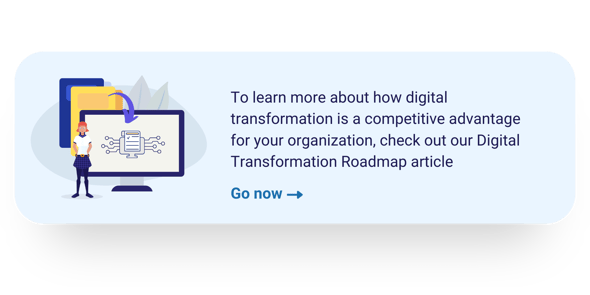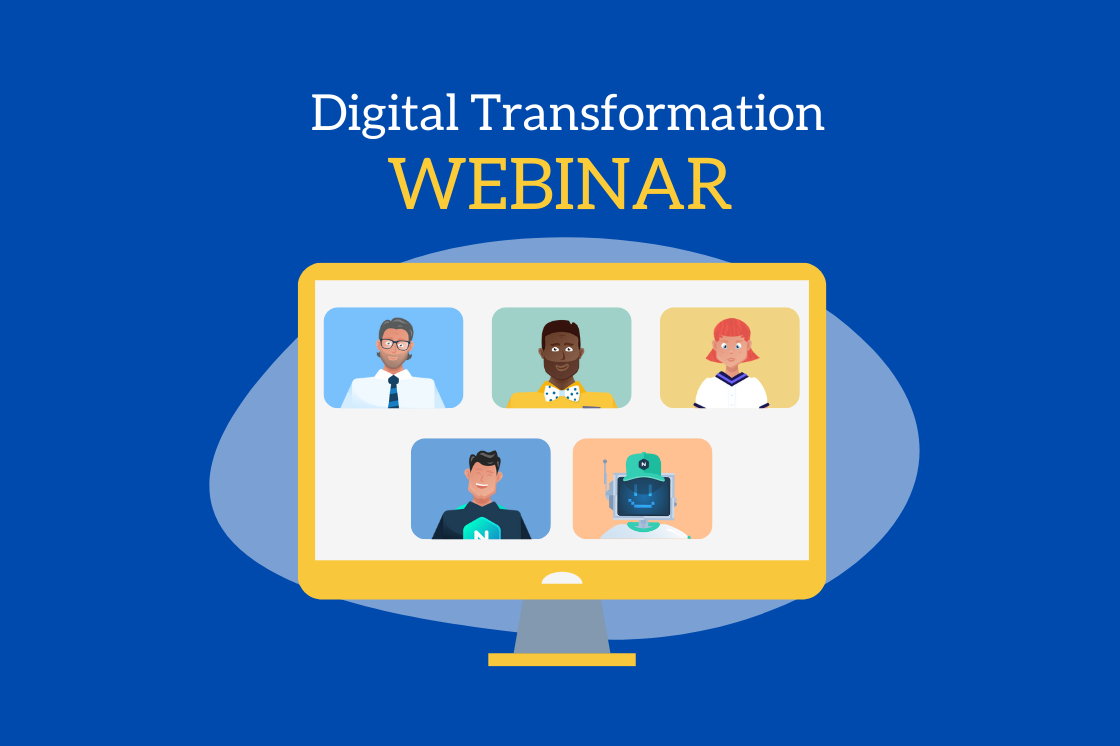Why Digital Transformation Fails
Enterprises are embarking on Digital Transformation initiatives to automate processes, improve profitability, and create compelling customer experiences. But did you know 75% of these initiatives fail?
So what is digital transformation? The problem is, ask five people to define digital transformation and you’ll get ten answers :)
Unfortunately, too many people believe it’s all about installing the latest software. Of course, it involves software; that’s the digital part. But installing software isn’t the endgame; improving business value is!
The pandemic has accelerated the need for digital transformation as it has forced organizations to adapt and improve.
Recent trends show that many have taken this time to invest in improving processes, upgrading systems, and investing in software to raise productivity and to save money.
This desire to improve productivity and save money has been a driving force behind many recent Digital Transformation initiatives.
What is digital transformation?
Let me start with a simple real-life example of how digital transformations can improve business outcomes.
I recently went into the storefront of a well-known courier company with a package I wanted to send to my brother.
The clerk handed me a multi-part form, a pen and told me to fill it out and press hard so that all copies were legible.
I thought to myself, seriously? You want me to fill out a paper form? I got very frustrated trying to get all my information into the tiny little boxes on the form.
I completed the form then handed it to the clerk, who then went to work typing the information into their computer.
Seriously? What a waste of time!
I had to sit around while the clerk reentered all my information. Not only did I have to wait, but this also created an opportunity for introducing errors.
This wasteful process is a perfect candidate for improvement!
Why couldn’t there be a kiosk in the store, allowing me to enter the data directly into the system then print all the necessary shipping labels?
That would speed up the entire process, enabling the clerk to service more customers while making me a happy camper.
My courier story is a simple example.
Still, I think it helps get the point across that Digital Transformations are about applying technology to improve a business operating model.
Now, look at your business. How many systems, tools, handoffs, and obstacles are there in your value chain?

Defining Digital Transformation
Let’s look at digital transformation from two perspectives that of the DISRUPTOR and the INCUMBENT.
The Disruptors include services like Air BnB, Amazon, Apple Music, Netflix, and Uber.
These companies have transformed traditional hospitality, retail, music, entertainment, and transportation industries with all-new digital operating models.
These companies leveraged digital technologies to create businesses unencumbered by the capital expenses of traditional companies.
Simply put, Air BnB doesn’t own or manage real estate, Uber doesn’t own or maintain fleets of vehicles, and Netflix doesn’t operate storefronts.
Then there are the incumbents, traditionally “brick and mortar” companies at risk of being disrupted by all-new digital operating models.
The incumbents enter into digital transformation initiatives to respond to the disruptor, for example, Marriott international and its Homes & Villas service, a direct response to Air BnB.
Traditional “brick and mortar” companies may also launch digital transformation projects to lower cost, improve service delivery, increase profits, and proactively innoculate themselves from disruption.
In this article, I am focusing on why the Digital Transformation initiatives of the incumbents fail.
Digital Transformation Failure
Digital transformations fail for a number of reasons, the key ones being in the categories of People, Process, and Technology.
People
Often there is a lack of awareness over the need to transform (until it’s too late). Incumbents, especially those leading their sector, can underestimate the risk and leave an opening for a more agile company to digitally disrupt their operations.
For example, Blockbuster had the opportunity to buy Netflix for a mere $50M but didn’t take the streaming threat seriously.
Even when a company realizes the need to transform, employees feeling threatened by the change often sabotage it from within to protect their interests or the status quo.
It is essential that leadership continuously evaluate external threats for potential disruption to their business. Digital Transformations also require effective organizational change if they are to succeed.
Agile Processes
Earlier today, I placed an order with Amazon for some organic pumpkin seeds. The item qualified for same-day delivery, and I’ll have it by dinner time.
Some will argue that Amazon’s advanced technology and exceptional logistics enables this outstanding level of service.
In reality, it was their understanding of the business outcome (same day delivery), then ensuring the right processes were in place to deliver.
Jeff Bezos once said, “It’s not that rare to hear a junior leader defend a bad outcome with something like, ‘Well, we followed the process.’ A more experienced leader will use it as an opportunity to investigate and improve the process. It’s always worth asking, do we own the process, or does the process own us?”
Processes map the path to delivering successful Digital Transformations. However, don’t become a slave to the process. Keep your eye on the desired results and continuously adjust the business processes accordingly. Learn more about Process Mapping by clicking on the link.
Technology
Once an organization has identified a Digital Transformation opportunity, it needs to automate the new processes in the appropriate technology.
Access to the right technology is seldom the problem.
Digital Transformation platforms are abundant in the market, or you can even build your own if you see that as a critical differentiator.
Technology failures are frequently the result of a lack of clarity on the desired business outcomes and the processes that will help you achieve those outcomes.
Failure to “delight the customer” can also result in Digital Transformation failure. Poor application performance, reliability issues, or a clunky user interface can all contribute to project failure.
I recently attempted to place an online order with a well known “big box” store. I needed to spend a certain amount of money to get free delivery. I started adding items to the cart only to find there were different categories of products. Even though my total spend exceeded the amount needed for free delivery, it didn’t apply.
I went ahead and ordered anyway, only to have my order delivered in three separate deliveries many days apart.
This vendor failed to deliver a positive experience, and I won’t be ordering from them again.
Digital Transformations fail when there is a lack of clarity on the business requirements and when delighting the customer is not a priority. Take the time to understand the customer’s needs before implementing a solution.
Why Digital Transformations Initiatives Fail?
I believe this quote from Dr. Anita Sands, thought leader and Servicenow board member, sums it up nicely, “A mistake many enterprises continue to make about digital transformation is thinking it’s mostly about deploying the latest technologies. Yes, that’s a part of it, but it’s also about radical and fundamental changes to every business and operating model.”
Digital Transformation Considerations
- Drive awareness that change is required
- Understand and communicate the desired business outcomes
- Develop agile business processes to support the transformation
- Solicit sponsorship of a leader you can drive the transformation
- Establish an organizational change management program
- Capture user stories and technical requirements to drive superior customer experiences
 Originally published Feb 15, 2021 09:51, updated May 27, 2022
Originally published Feb 15, 2021 09:51, updated May 27, 2022


